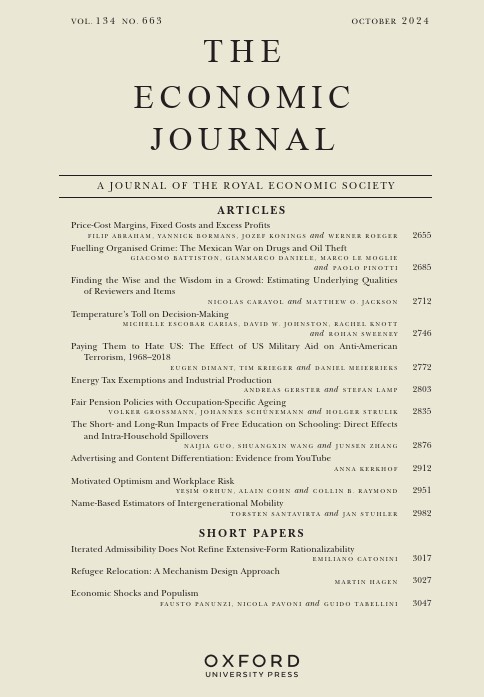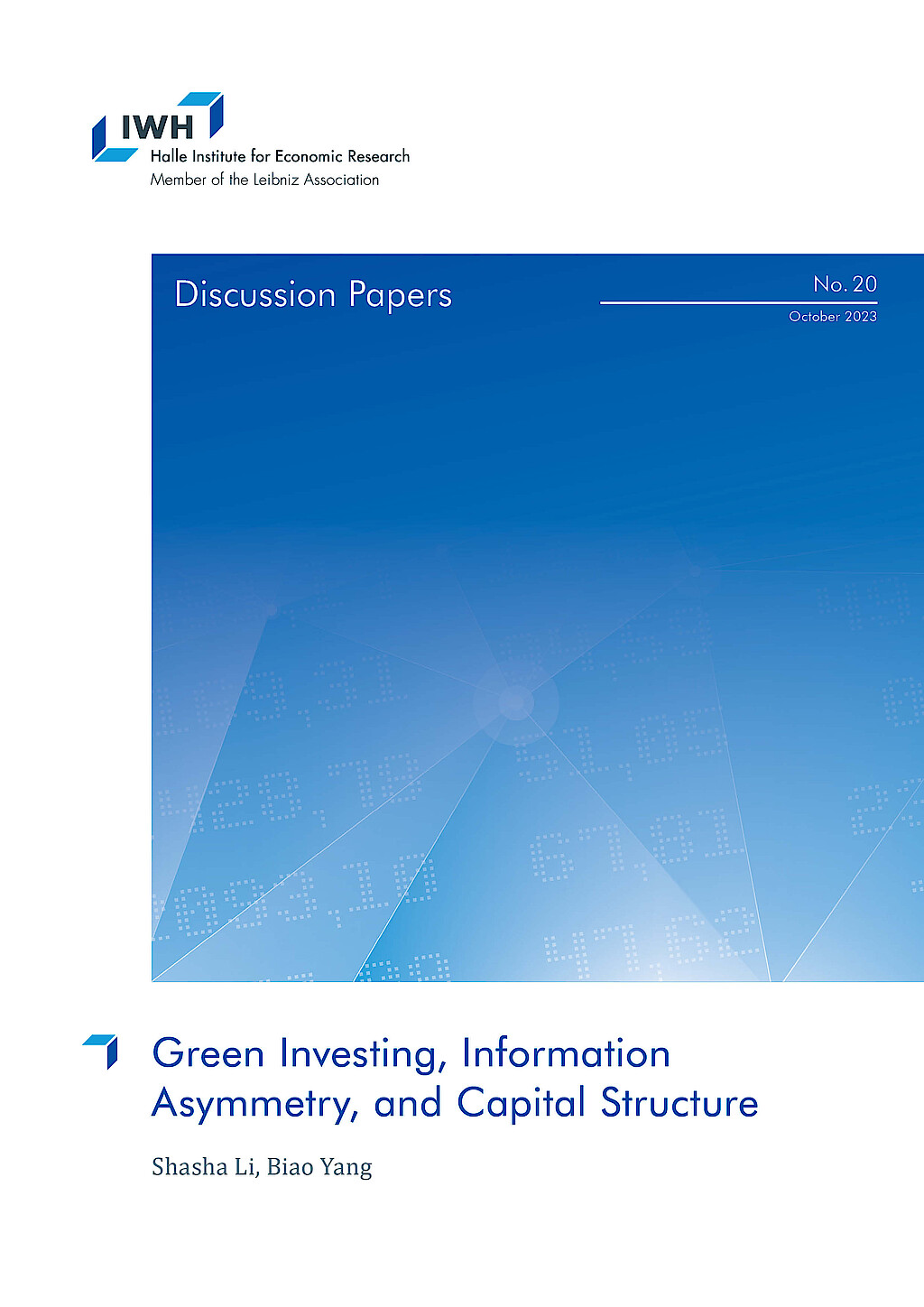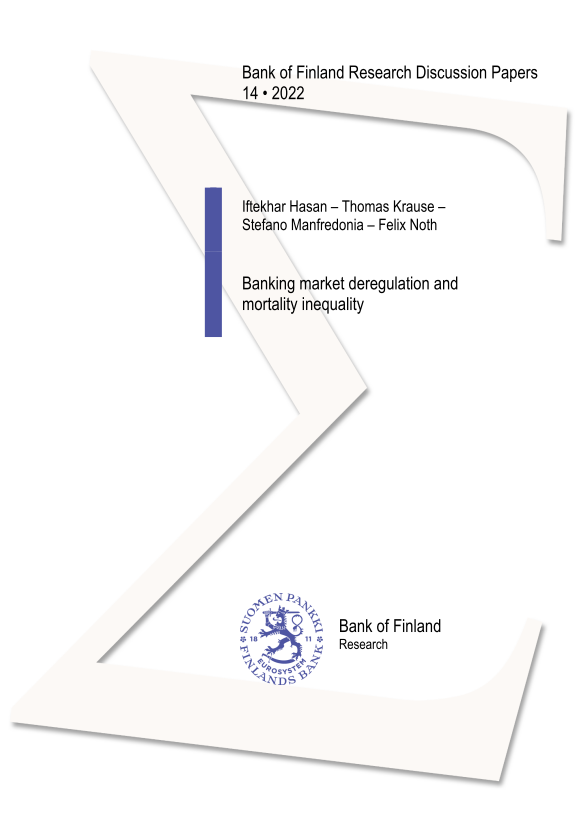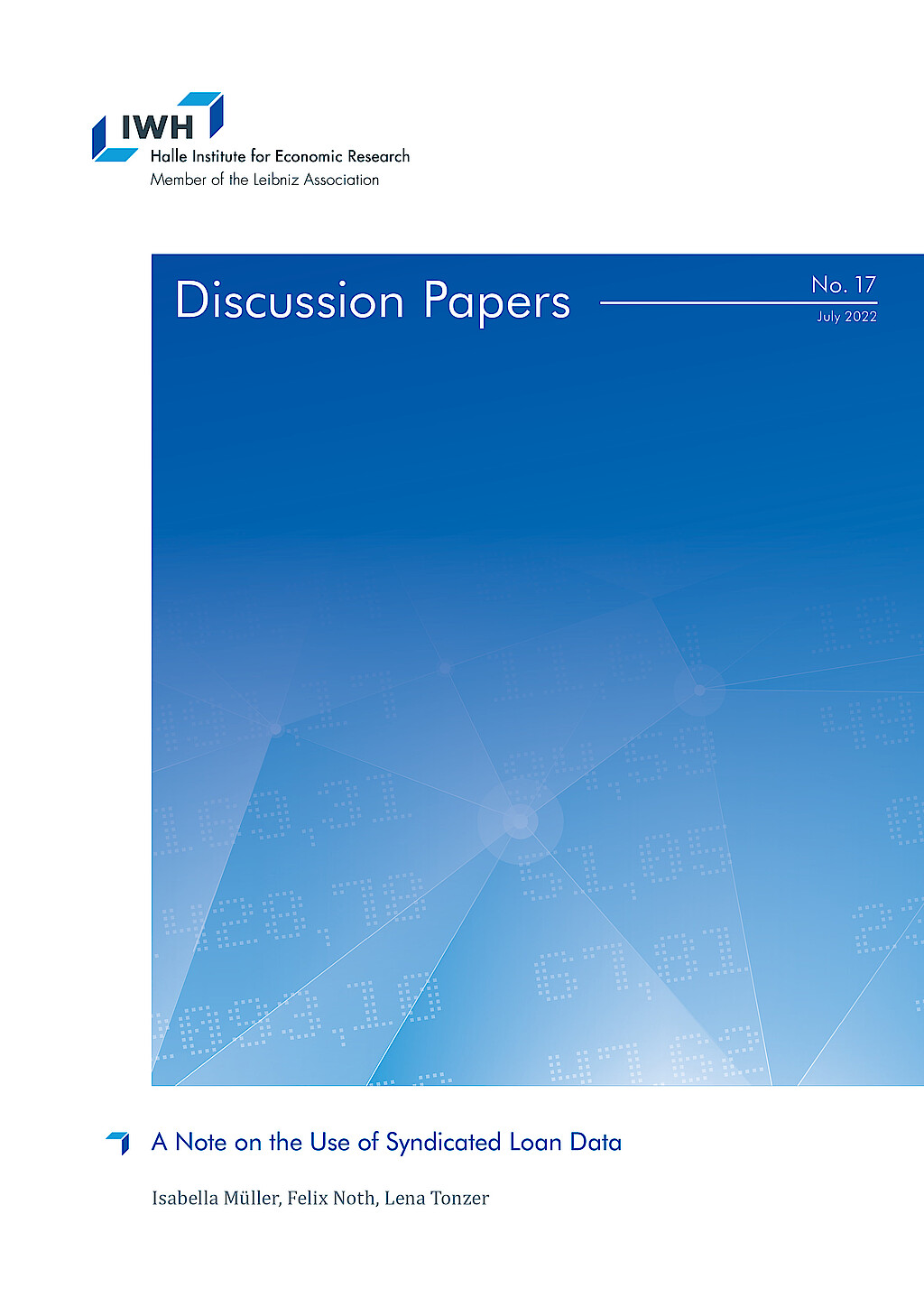Anpassungsfähigkeit und Resilienz des Finanzsystems
Diese Forschungsgruppe untersucht kritische Aspekte der Anpassungsfähigkeit und Widerstandsfähigkeit von Finanzsystemen. Sie analysiert die Auswirkungen von Naturkatastrophen auf Finanzsysteme, die Auswirkungen politischer Präferenzen für die grüne Transformation und die Bedeutung von Kultur in den Volkswirtschaften.
Forschungscluster
Finanzresilienz und RegulierungIhr Kontakt

- Abteilung Finanzmärkte
PROJEKTE
08.2022 ‐ 07.2025
OVERHANG: Schuldenüberhang und grüne Investitionen – die Rolle von Banken für den klimafreundlichen Umgang mit emissionsintensiven Anlagenvermögen
Bundesministerium für Bildung und Forschung (BMBF)
Ziel von OVERHANG ist es, die Rolle von Banken für den klimafreundlichen Umgang mit emissionsintensiven Anlagevermögen zu untersuchen. Hierdurch sollen politikrelevante Erkenntnisse zu Finanzregulierung, staatlich kontrollierter Kreditvergabe und Finanzstabilität identifiziert sowie eine Sensibilisierung der verschuldeten Akteurinnen und Akteuren erreicht werden.
Das Projekt wird vom Bundesministerium für Bildung und Forschung (BMBF) finanziert.
01.2015 ‐ 12.2019
Interactions between Bank-specific Risk and Macroeconomic Performance
Deutsche Forschungsgemeinschaft (DFG)
07.2016 ‐ 12.2018
Relationship Lenders and Unorthodox Monetary Policy: Investment, Employment, and Resource Reallocation Effects
Leibniz-Gemeinschaft
We combine a number of unique and proprietary data sources to measure the impact of relationship lenders and unconventional monetary policy during and after the European sovereign debt crisis on the real economy. Establishing systematic links between different research data centers (Forschungsdatenzentren, FDZ) and central banks with detailed micro-level information on both financial and real activity is the stand-alone proposition of our proposal. The main objective is to permit the identification of causal effects, or their absence, regarding which policies were conducive to mitigate financial shocks and stimulate real economic activities, such as employment, investment, or the closure of plants.
Referierte Publikationen

The Impact of Competition on Bank Orientation
in: Journal of Financial Intermediation, Nr. 3, 2007
Abstract
How do banks react to increased competition? Recent banking theory significantly disagrees regarding the impact of competition on bank orientation—i.e., the choice of relationship-based versus transactional banking. We empirically investigate the impact of interbank competition on bank branch orientation. We employ a unique data set containing detailed information on bank–firm relationships. We find that bank branches facing stiff local competition engage considerably more in relationship-based lending. Our results illustrate that competition and relationships are not necessarily inimical.

Interbank Exposures: An Empirical Examination of Contagion Risk in the Belgian Banking System
in: International Journal of Central Banking, Nr. 2, 2007
Abstract
Robust (cross-border) interbank markets are important for the proper functioning of modern financial systems. However, a network of interbank exposures may lead to domino effects following the event of an initial bank failure. We investigate the evolution and determinants of contagion risk for the Belgian banking system over the period 1993–2002 using detailed information on aggregate interbank exposures of individual banks, large bilateral interbank exposures, and cross-border interbank exposures. The "structure" of the interbank market affects contagion risk. We find that a change from a complete structure (where all banks have symmetric links) toward a "multiplemoney-center" structure (where money centers are symmetrically linked to otherwise disconnected banks) has decreased the risk and impact of contagion. In addition, an increase in the relative importance of cross-border interbank exposures has lowered local contagion risk. However, this reduction may have been compensated by an increase in contagion risk stemming from foreign banks.

Repercusiones de la integración y consolidación de los sectores bancarios europeos sobre la innovación y las actividades de los emprendedores
in: Papeles de Economía Española, Nr. 110, 2006
Abstract
En este artículo se analiza si el programa de intensificación de la integración del sector financier europeo puede dañar a la innovación y al crecimiento en Europa. En particular, es preciso resaltar los problemas que dicha integración financiera puede ocasionar sobre los últimos avances en materia de desarrollo empresarial. La integración financiera, al intensificar la competencia y la consolidación del sector bancario europeo, podría poner en peligro la financiación procedente de las fuentes más innovadoras. Sin embargo, al sopesar los datos actuales, la conclusión es que estos problemas serían, a lo sumo, transitorios.

Crossing Networks Competition and Design
in: Competition and Regulation in Network Industries, Nr. 4, 2006
Abstract
In the past two decades, Alternative Trading Systems (ATSs) started to compete with traditional exchanges. Our paper focuses on one such system: a Crossing Network (CN). First, we discuss the distinct institutional aspects a CN offers compared to traditional markets. Next, we present an overview of the theoretical and empirical literature analyzing their success in competing with traditional markets. Finally, we offer some prospects on the potential outcome of this competition, taking into account market design issues such as the optimal degree of transparency of CNs. We also provide a market practioner’s view on the market design of CNs.

Entry and Strategic Information Display in Credit Markets
in: Economic Journal, Nr. 513, 2006
Abstract
In many countries, lenders voluntarily provide information about their borrowers to private credit registries. A recent World Bank survey reveals that the display of a lender's own borrower information is often not reciprocated. That is, access to these registries does not require the prior provision of proprietary data. We argue that incumbent lenders release information about a portion of their profitable borrowers for strategic reasons. The reasoning is that the pool of unreleased borrowers becomes characterised by a severe adverse selection problem. This prevents the entrants from bidding for all the incumbent's profitable borrowers and reduces their scale of entry.
Arbeitspapiere

Green Investing, Information Asymmetry, and Capital Structure
in: IWH Discussion Papers, Nr. 20, 2023
Abstract
We investigate how optimal attention allocation of green-motivated investors changes information asymmetry in financial markets and thus affects firms‘ financing costs. To guide our empirical analysis, we propose a model where investors with heterogeneous green preferences endogenously allocate limited attention to learn market-level or firm-specific fundamental shocks. We find that a higher fraction of green investors in the market leads to higher aggregate attention to green firms. This reduces the information asymmetry of green firms, leading to higher price informativeness and lower leverage. Moreover, the information asymmetry of brown firms and the market increases with the share of green investors. Therefore, greater green attention is associated with less market efficiency. We provide empirical evidence to support our model predictions using U.S. data. Our paper shows how the growing demand for sustainable investing shifts investors‘ attention and benefits eco-friendly firms.

Long-run Competitive Spillovers of the Credit Crunch
in: IWH Discussion Papers, Nr. 10, 2023
Abstract
<p>Competition in the U.S. appears to have declined. One contributing factor may have been heterogeneity in the availability of credit during the financial crisis. I examine the impact of product market peer credit constraints on long-run competitive outcomes and behavior among non-financial firms. I use measures of lender exposure to the financial crisis to create a plausibly exogenous instrument for product market credit availability. I find that credit constraints of product market peers positively predict growth in sales, market share, profitability, and markups. This is consistent with the notion that firms gained at the expense of their credit constrained peers. The relationship is robust to accounting for other sources of inter-firm spillovers, namely credit access of technology network and supply chain peers. Further, I find evidence of strategic investment, i.e. the idea that firms increase investment in response to peer credit constraints to commit to deter entry mobility. This behavior may explain why temporary heterogeneity in the availability of credit appears to have resulted in a persistent redistribution of output across firms.</p>

Banking Market Deregulation and Mortality Inequality
in: Bank of Finland Research Discussion Papers, Nr. 14, 2022
Abstract
This paper shows that local banking market conditions affect mortality rates in the United States. Exploiting the staggered relaxation of branching restrictions in the 1990s across states, we find that banking deregulation decreases local mortality rates. This effect is driven by a decrease in the mortality rate of black residents, implying a decrease in the black-white mortality gap. We further analyze the role of mortgage markets as a transmitter between banking deregulation and mortality and show that households' easier access to finance explains mortality dynamics. We do not find any evidence that our results can be explained by improved labor outcomes.

A Note on the Use of Syndicated Loan Data
in: IWH Discussion Papers, Nr. 17, 2022
Abstract
<p>Syndicated loan data provided by DealScan is an essential input in banking research. This data is rich enough to answer urging questions on bank lending, e.g., in the presence of financial shocks or climate change. However, many data options raise the question of how to choose the estimation sample. We employ a standard regression framework analyzing bank lending during the financial crisis of 2007/08 to study how conventional but varying usages of DealScan affect the estimates. The key finding is that the direction of coefficients remains relatively robust. However, statistical significance depends on the data and sampling choice and we provide guidelines for applied research.</p>

Capital Requirements, Market Structure, and Heterogeneous Banks
in: IWH Discussion Papers, Nr. 15, 2022
Abstract
Bank regulators interfere with the efficient allocation of resources for the sake of financial stability. Based on this trade-off, I compare how different capital requirements affect default probabilities and the allocation of market shares across heterogeneous banks. In the model, banks‘ productivity determines their optimal strategy in oligopolistic markets. Higher productivity gives banks higher profit margins that lower their default risk. Hence, capital requirements indirectly aiming at high-productivity banks are less effective. They also bear a distortionary cost: Because incumbents increase interest rates, new entrants with low productivity are attracted and thus average productivity in the banking market decreases.



















